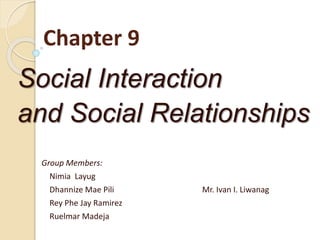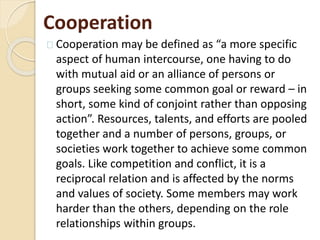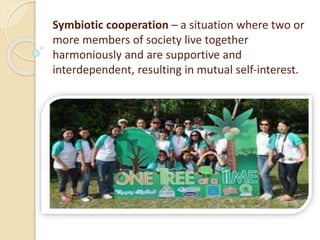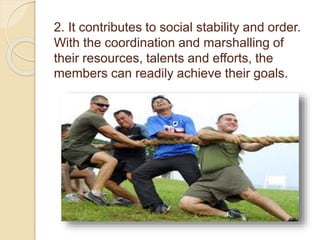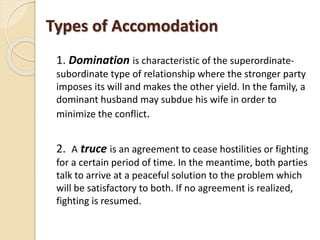This document discusses various types of social interaction and relationships, including cooperation, competition, conflict, differentiation, and accommodation. It defines these terms and provides examples. Cooperation involves groups working together towards a common goal, while competition is a struggle over limited resources. Conflict is open antagonism that can escalate to violence. Differentiation creates separate interests between groups. Accommodation processes like arbitration help resolve disputes between conflicting parties.
